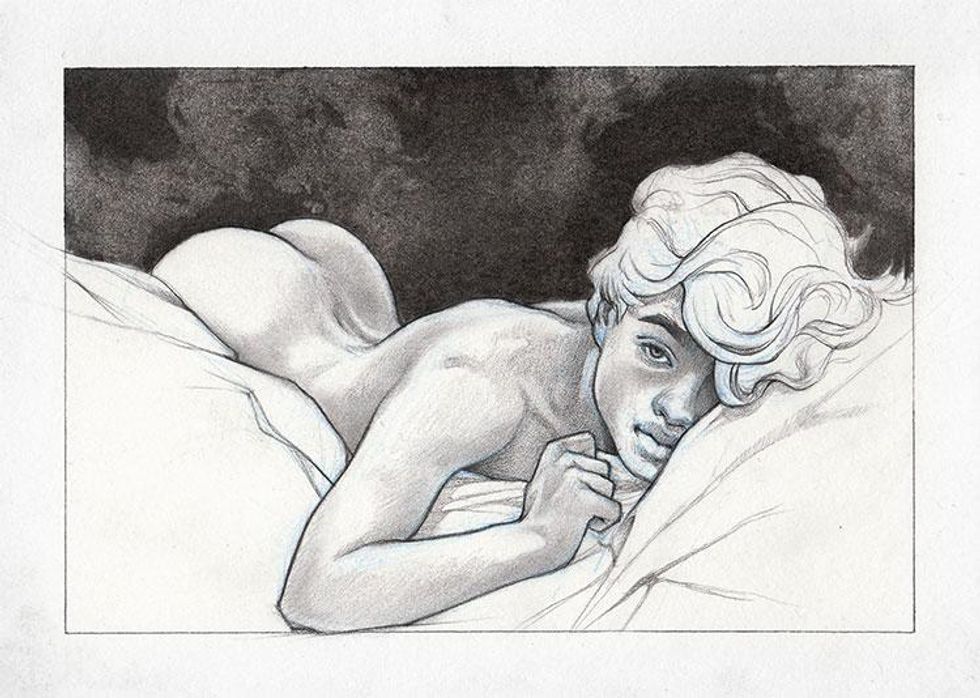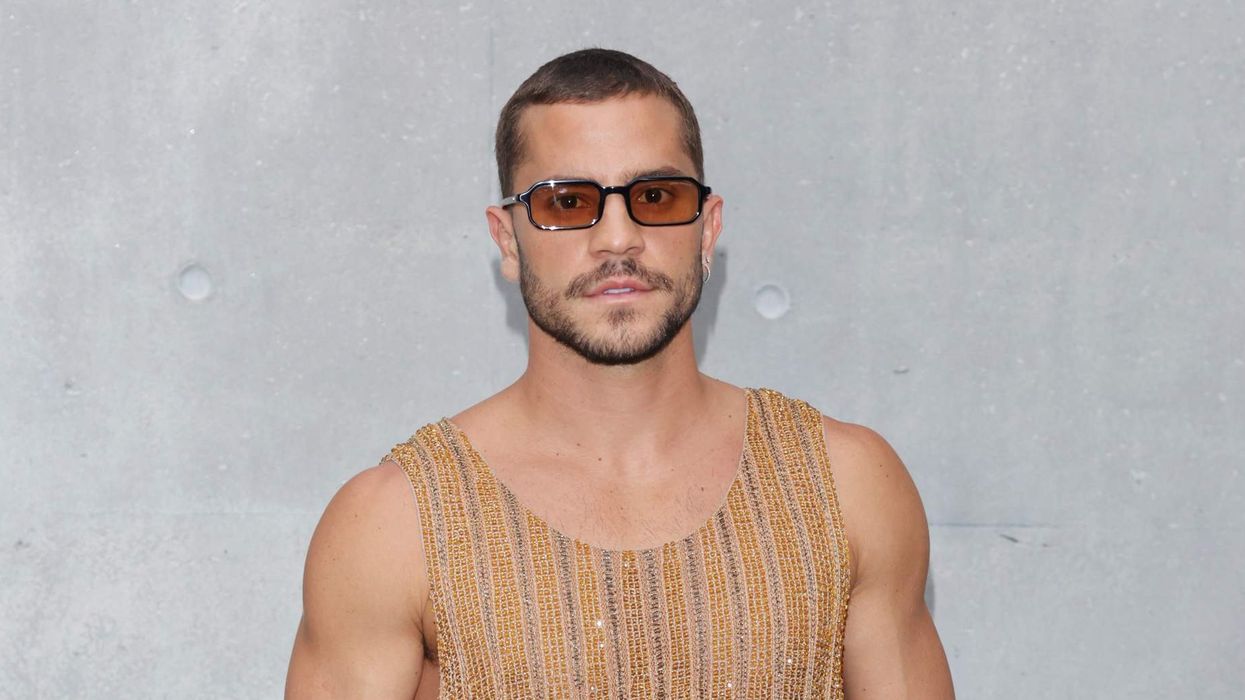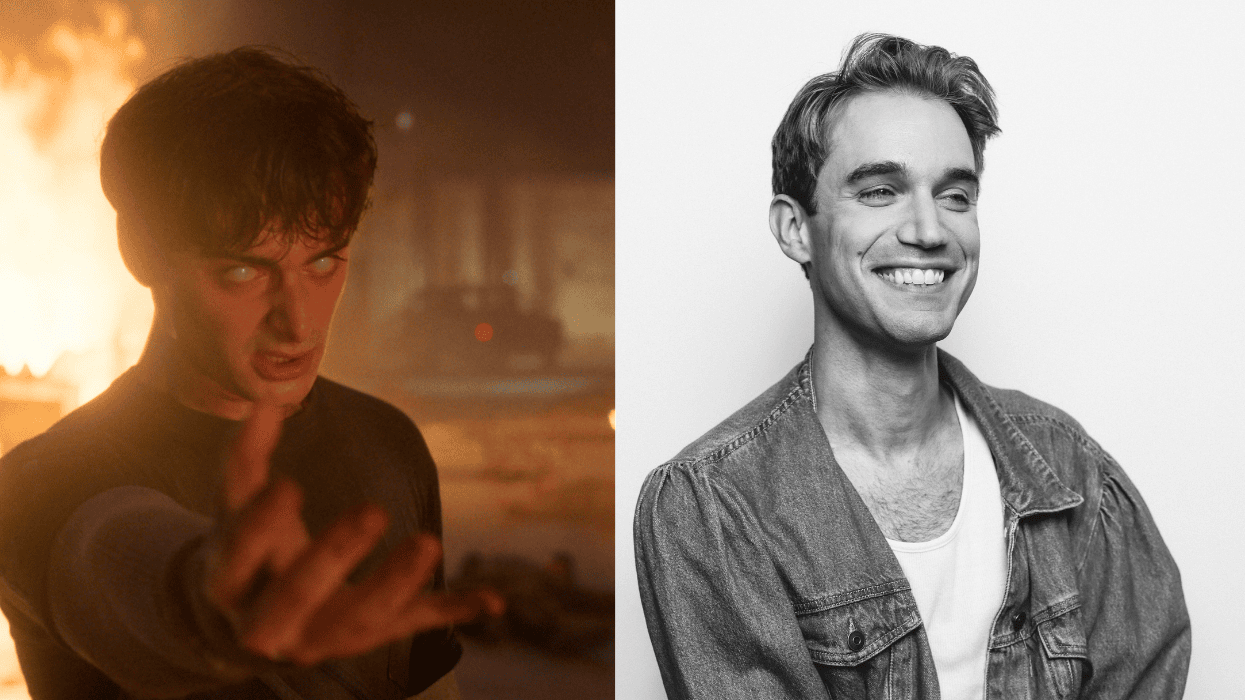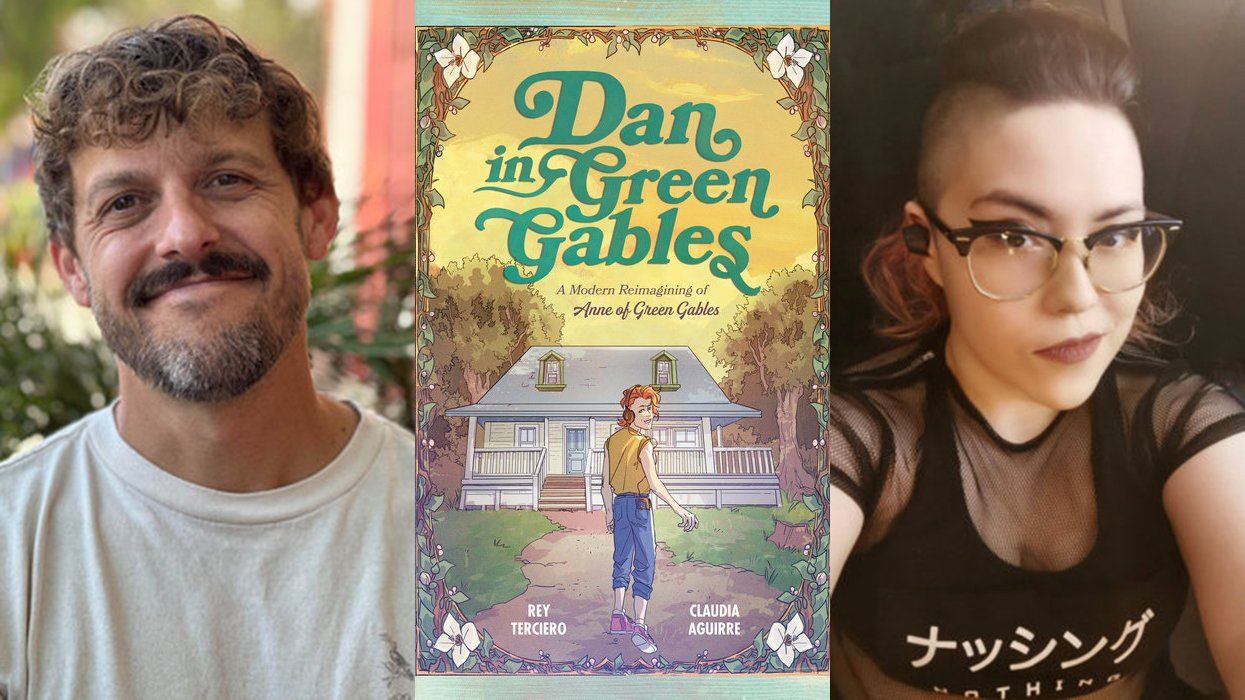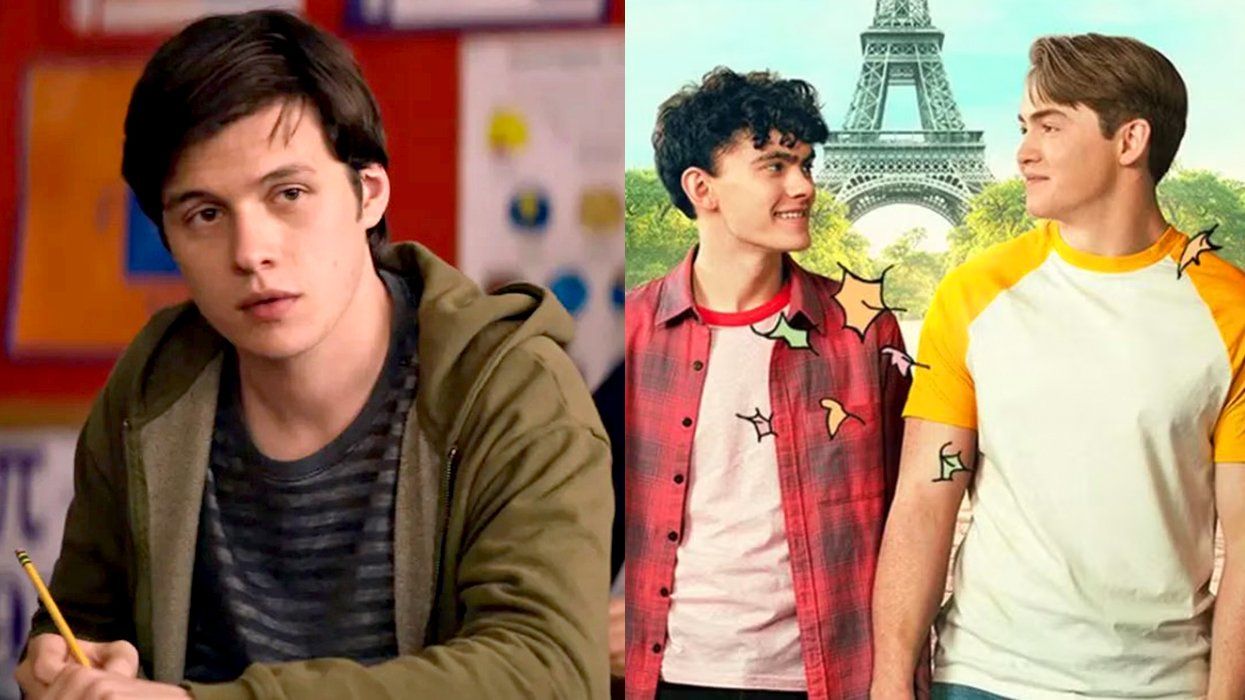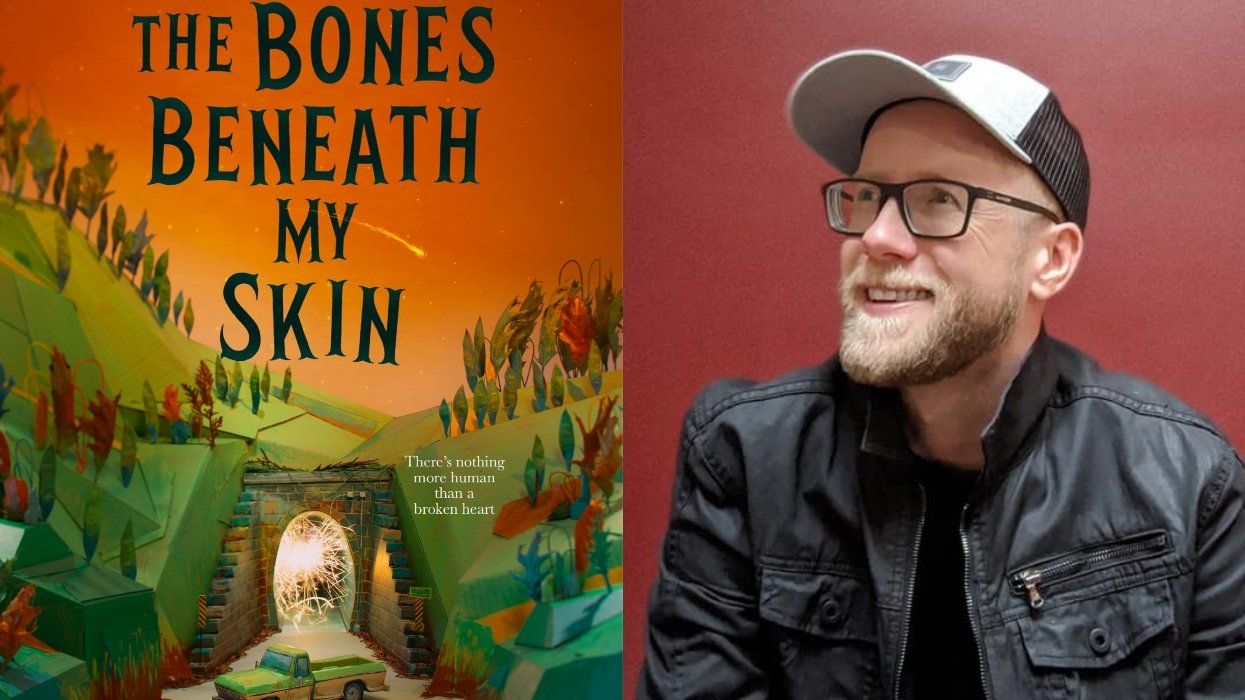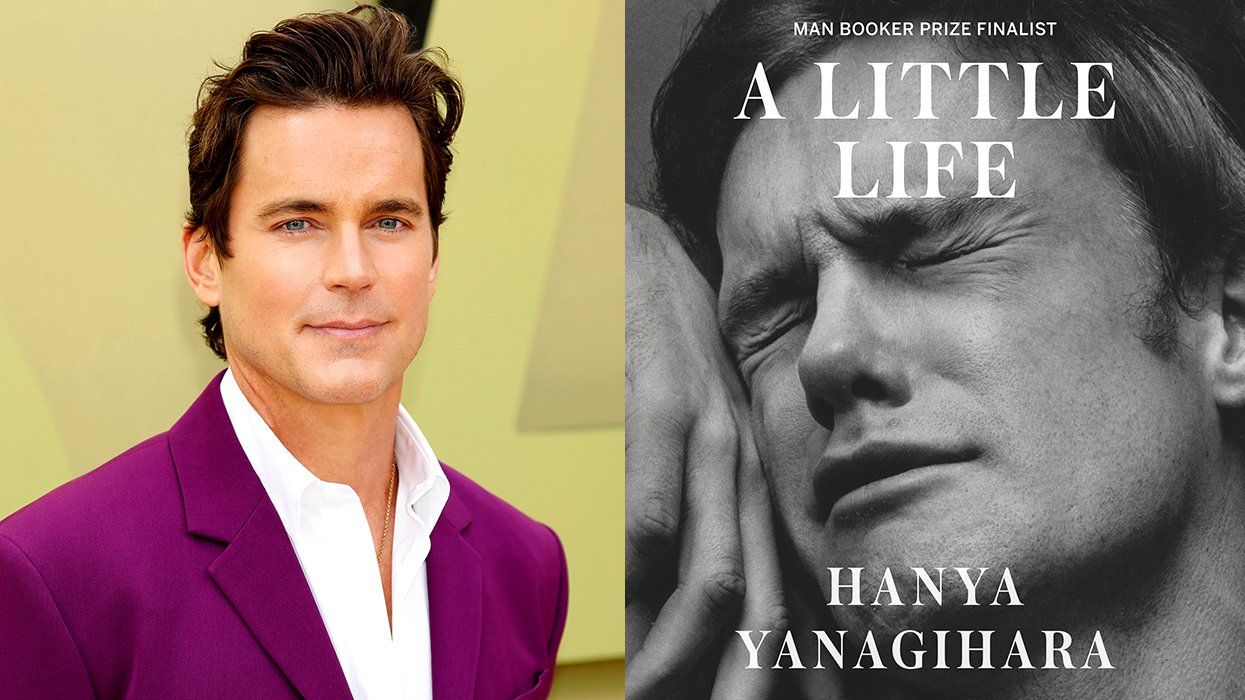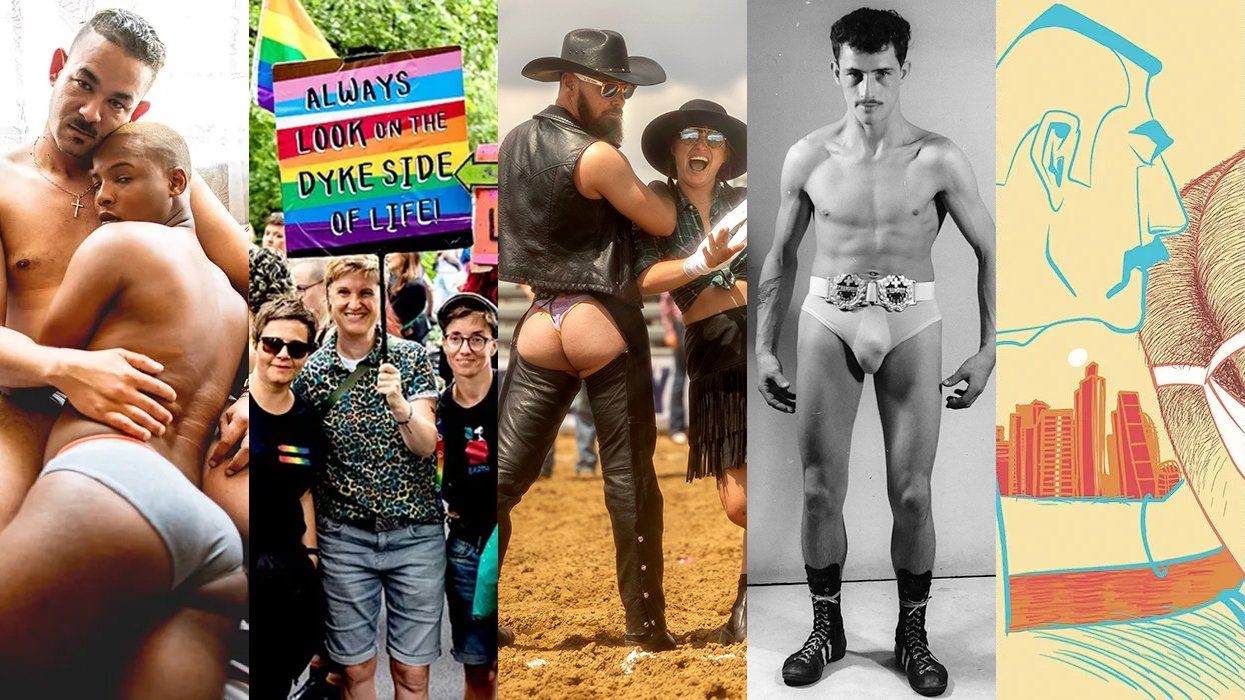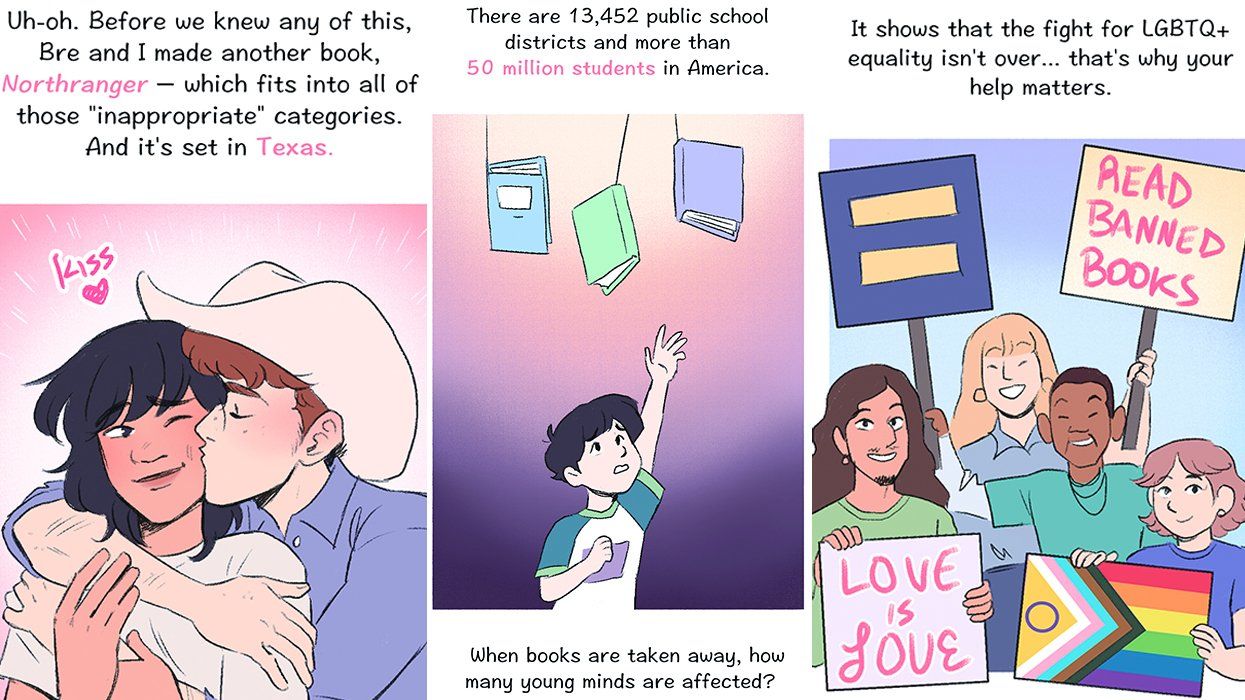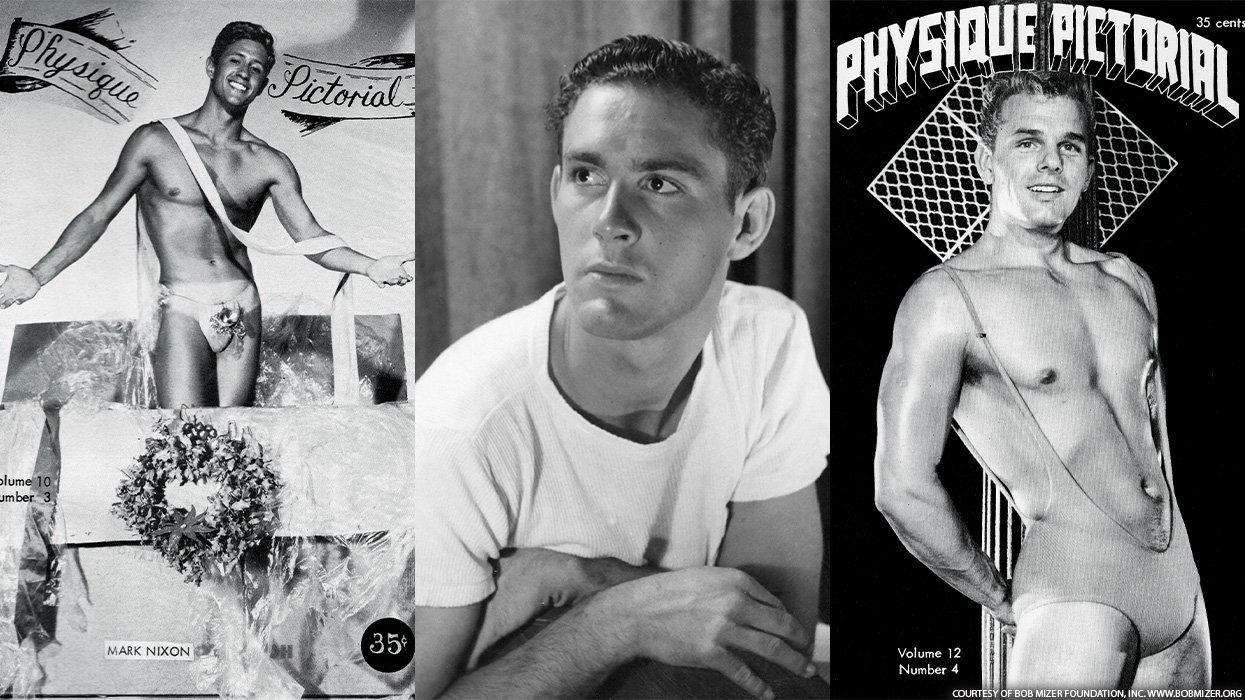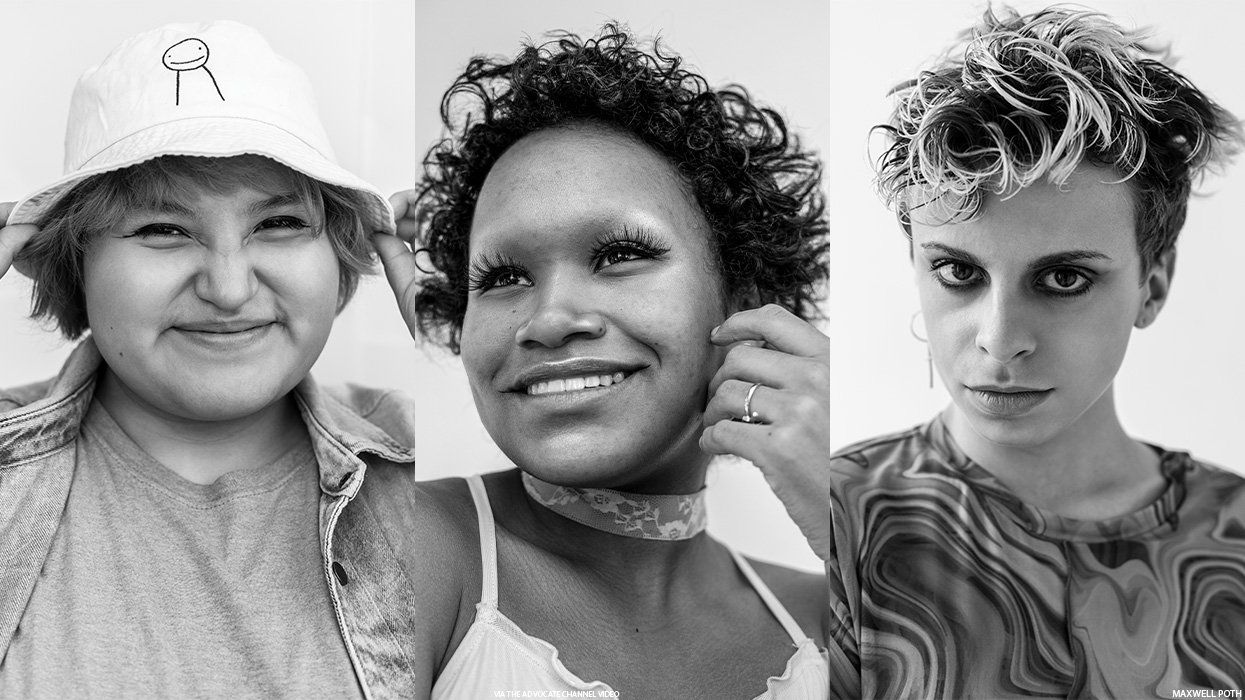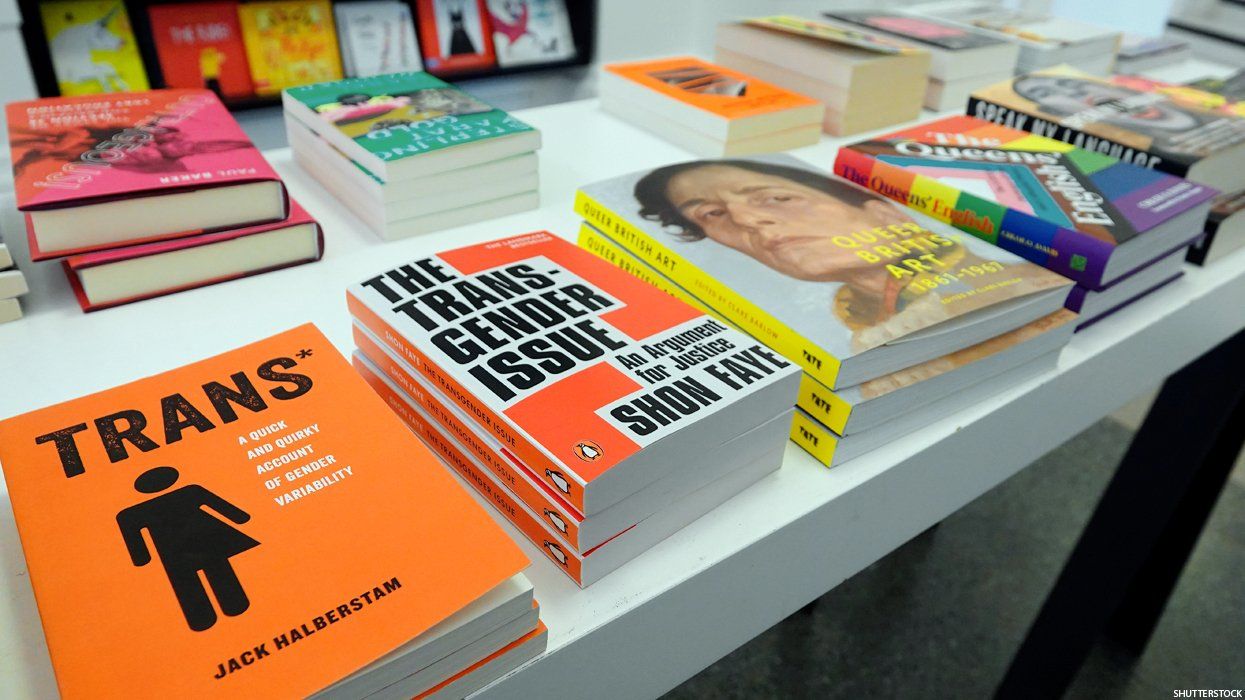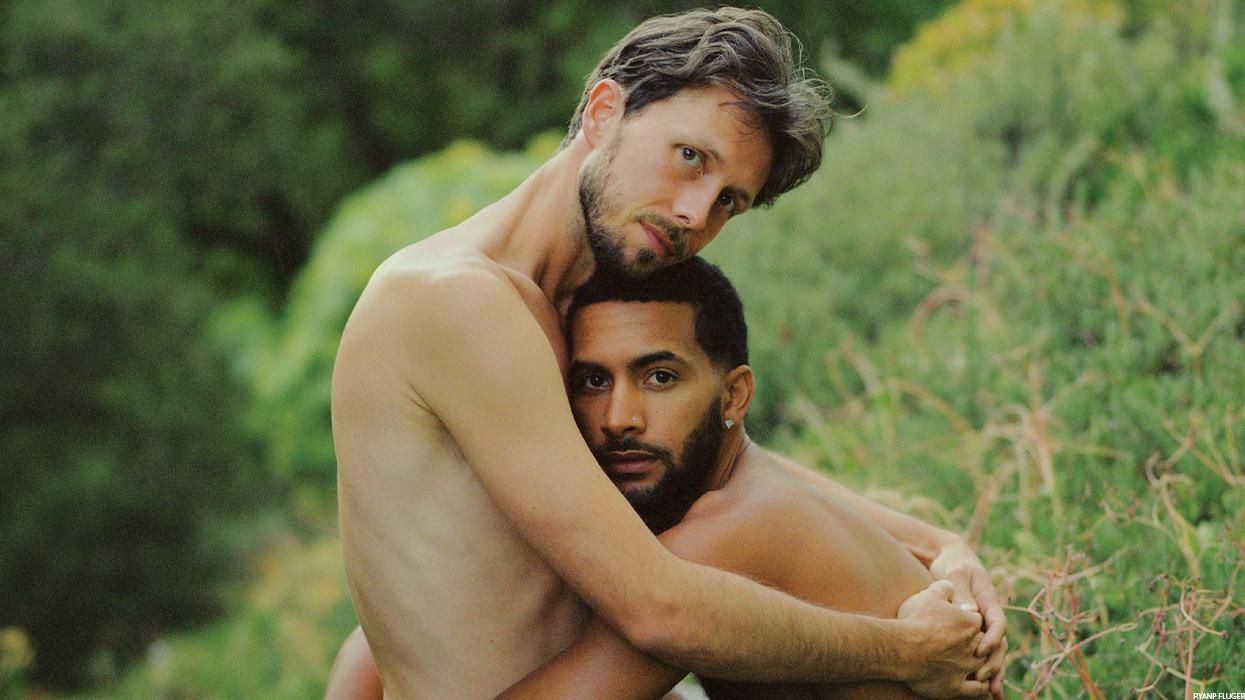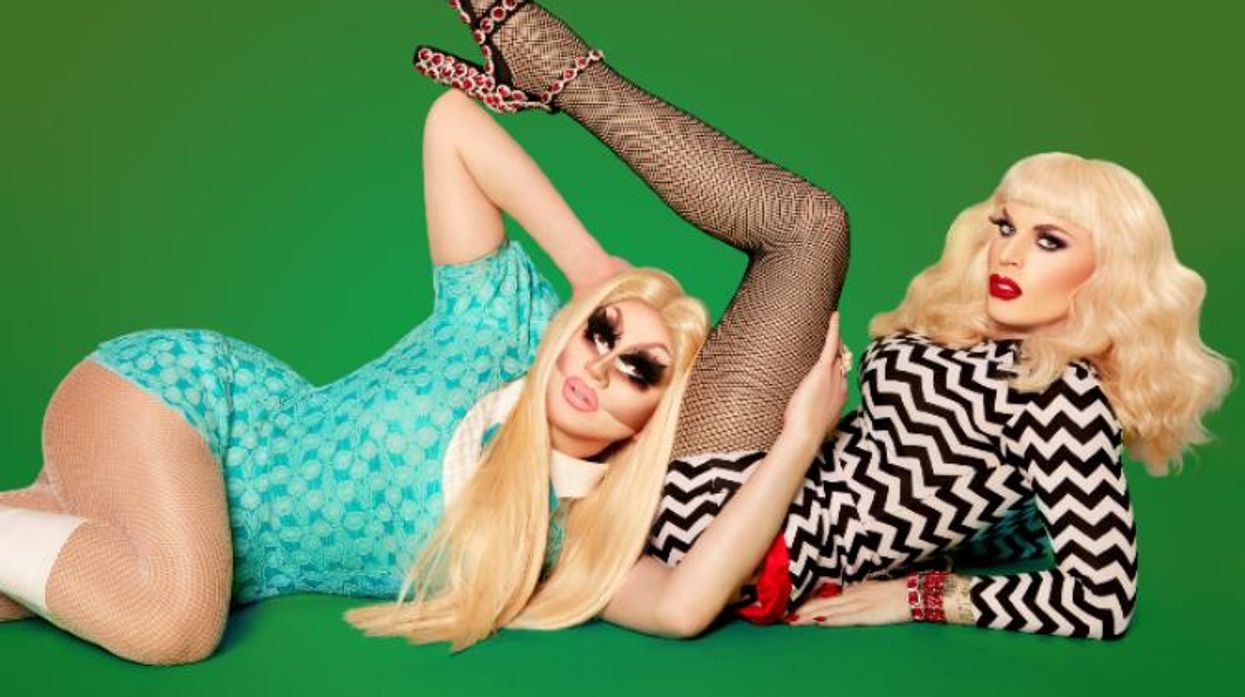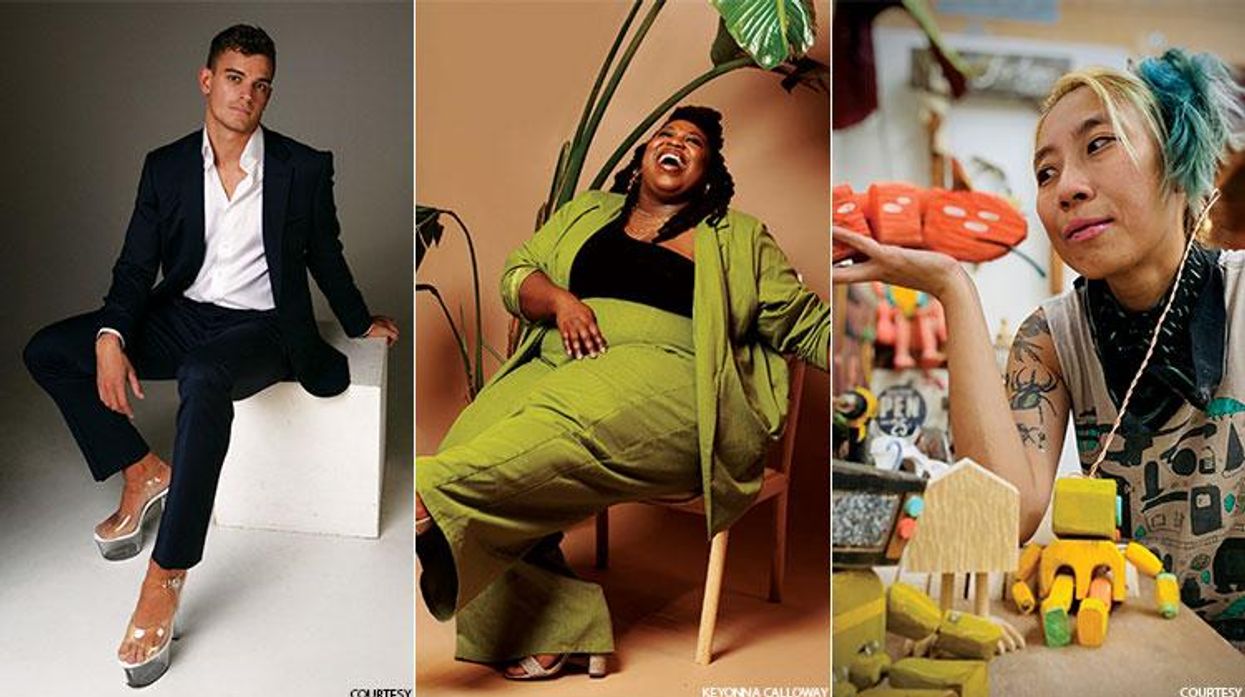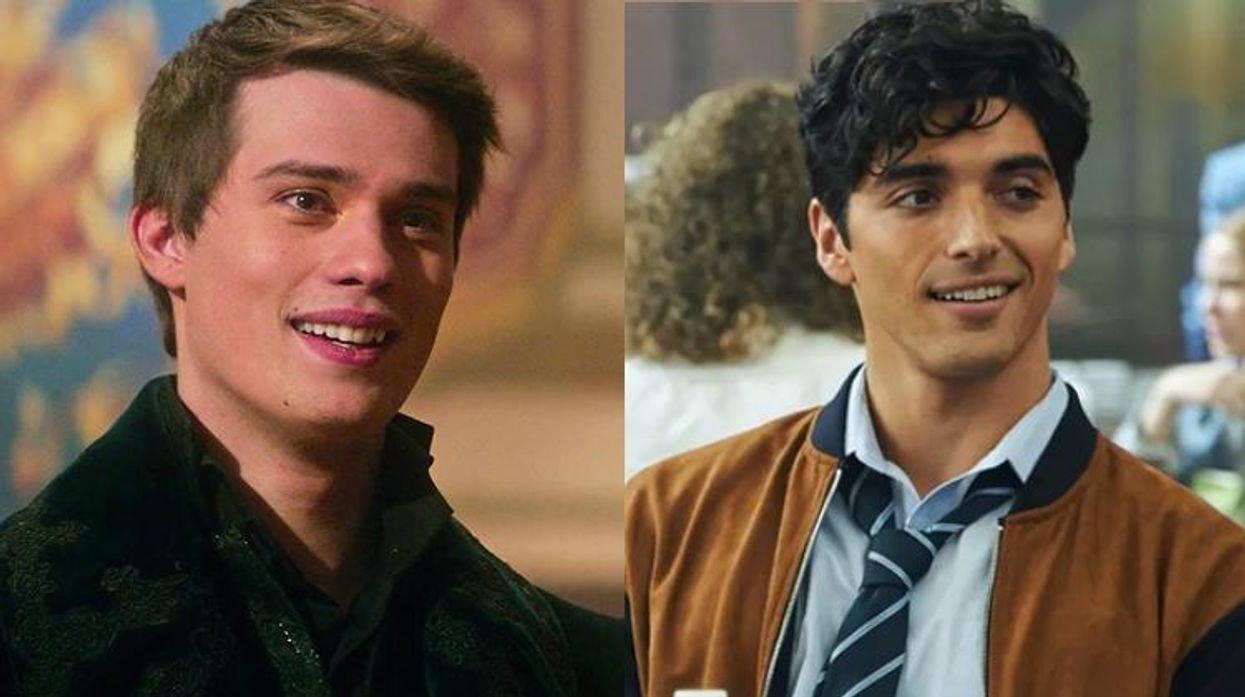Illustrations by Martin Bedolla.
Martin Bedolla had already been posting his illustrations on Instagram (@martinbedolla) for about two years prior to 2016, but that year marked a turning point for the artist. "A friend of mine suggested I do Kinkcember," Bedolla wrote in a post on December 1. He was citing one of a series of monthly themes, like Inktober and MerMay, that serve as prompts for visual artists on social media. "Naturally, I said sure. Haha. First up. Bondage."
The image Bedolla uploaded with that caption depicted a male figure, pantless, with a reddening butt, a blushing face beneath fabric tied over his mouth, and his hands above his head (out of frame, but presumably tied up). For Bedolla, the post was the first of 31 that stretched over the next few weeks. (As he became more detailed, some pieces took more than a day to create, so his Kinkcember wound up ending in January.) His art featured men in various states of undress, some of them bound or gagged, one of them fellating a candy cane, and another burying his nose in someone's armpit. At one point, an Instagram Live stream of Bedolla creating one of the pieces got his IG streaming privileges revoked because of the content. But the series drummed up a flood of followers--hundreds per week, according to Bedolla--even though most of the artwork was posted without hashtags. That flood pushed the 27-year-old, who hails from Grand Rapids, Mich., over the 30,000-follower mark, and it changed the way he interacted with the platform. "Right after that first Kinkcember, it was a big spike in engagement," Bedolla says.
Art first came to Bedolla in a way it does for many teens: through doodling. But after enrolling at Grand Rapids Community College and taking a few drawing classes, he declared fine art as a major and took his practice more seriously, later attending Kendall College of Art and Design. "After I graduated, I actually started exploring what I wanted my style to be and what I wanted to say with my work," Bedolla says. "Initially, I always thought nudes--like, classical nudes--were fascinating and sensual. So I started there."
Those initial nudes had Bedolla leaning toward the female form, pulling visual cues from Leonardo da Vinci's sketches and the paintings of Caravaggio and Michelangelo--searching for softness and delicacy. But after joining Instagram in 2013 and finding an audience that preferred his male figures, Bedolla honed his focus.
At first, those male figures were portraits, and sometimes the occasional "casual nude," as he describes it. A handful of followers sent in images of themselves for Bedolla to draw, and he did. But after that first Kinkcember series, which he repeated in 2017 and has already started to do again this year, things took a definitive turn.
"When I started doing more risque things, people were like, 'Oh, draw me, like one of your French girls,'" Bedolla says, laughing. "They would send casual shirtless photos just to see if I would draw them. I did at first, but as my following grew, and I did Kinkcember, and I got more things on my plate, and people kept sending things in...I can't draw everyone."
With the more salacious art has come more salacious content. By Bedolla's count, since that first series, he's received more than 150 personal photos and videos, some quite explicit, from followers to use as reference material for new pieces. Using a variety of body shapes and compromising positions, Bedolla renders them in his trademark cherubic style and adds them to his feed, taking care to hide some of the more objectionable bits behind pencils or strategically placed strips of text.
"I'm really careful," says the artist (who typically works in graphite, watercolor, and ink). "I've gotten things taken down maybe a handful of times, and I've seen other people get their stuff censored or even their accounts deleted. I rely on Instagram for a lot, especially selling my work, but also getting it out there and having people see it. So as much as I might want to post more explicit things, it's not worth the repercussions."
Bedolla isn't the only gay artist who uses Instagram as a part of his practice. The social media network has become gallery, artist salon, studio, and portfolio for a generation of creatives. Zach Grear (@zachgrearart), who illustrates on found imagery, says he uses Instagram as a portfolio and that it's the driver for the majority of his sales and commissions. The same goes for Zachary Brunner (@zacharyiswackary), a full-time commercial illustrator who not only uses his Instagram to post his personal work--which led to his being offered a solo gallery show--but also to connect with other gay artists around the world. Another artist, Adam Chuck (@adam__chuck) has connected with both galleries and his models via Instagram. But as much as the platform can be a benefit, it can be a hindrance, too.
"You can get shadow-banned," says St. Louis-based artist Ryan Stephens (@ryantheart), referring to a phenomenon where a user's posts go up but are kept from his followers' feeds (as opposed to the outright censoring of posts and banning of accounts, both of which have happened to Stephens). "Sometimes if my artwork gets too risque, even if it's censored, the next month of posts seem to go unnoticed by followers. It's strange how inconsistent my likes and comments are, and a lot of homocentric artists have been having this same issue on Instagram." Multimedia artist Gio Black Peter (@gioblackpeterx) curated an exhibition this year called "The Violators," featuring the work of 15 artists who have been censored on social media in some way.
Bedolla, however, skirts all that by altering his work to pass guidelines. At the same time, he juggles the ever-changing, engagement-focused algorithm. "That really plays a role in shaping what I post," he says. "I still draw whatever I want, but I've learned that I've kind of pigeonholed myself because people go to my art to see homoerotic content or explicit things, and when I don't post that, and do something more PG-13 or more casual, they aren't interested." That lost engagement can mean new posts aren't as visible.
Trying to switch platforms is an option, but not the most attractive one. Says Chuck, "Instagram works the most because it's something everyone has and uses. I have a website, but it doesn't give me the same traffic. And on Tumblr, the work gets discredited and it's a bit chaotic."
Bedolla is plugging full steam ahead with Instagram. It's the source of 90 percent of his art business, which currently makes up half his income. "The ultimate message that I want to deliver with my art is nothing super deep or super spiritual," he says. "It's just, 'Sex is good, and sex sells.' And not just sex as in intercourse, but just sexual things in general." He pauses. "And, of course, I like to push it a bit."
RELATED: 50 Sweet and Not So Innocent Drawings by Martin Bedolla
*a version of this story appeared under the headline "Post Me Like One of Your French Girls" in the OUT100 2018 issue.



